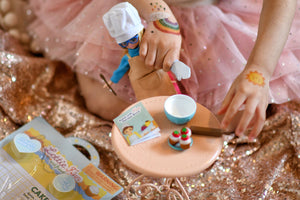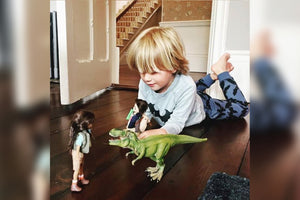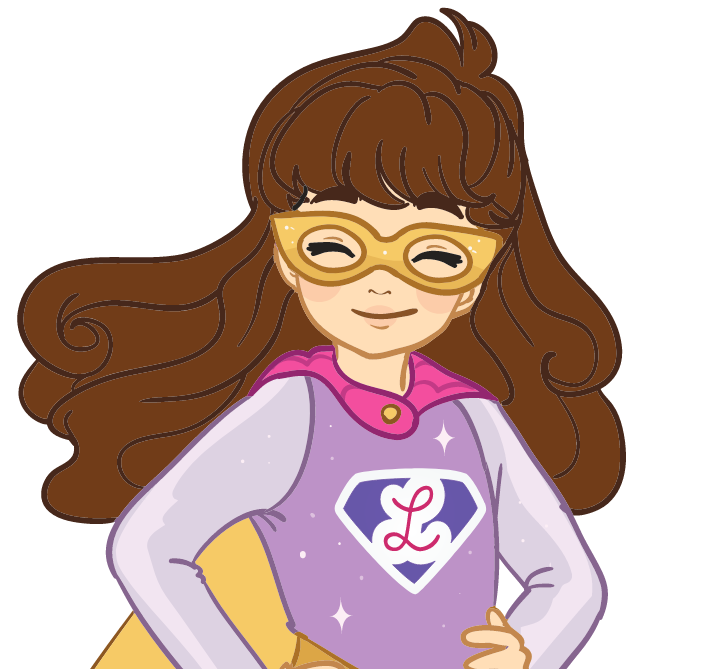6 Types of Play that Children Engage In
Playing is something that comes so naturally for children that, as adults, all we can do is facilitate and observe this wonderment of childhood. But, have you ever realized that there are different types of play? That’s right! As children grow, they go through 6 developmental stages of play. You can think of these as playtime milestones.
What exactly is play anyway? Anytime a child is engaged in a fun activity that they enjoy, that can be classified as play. But play isn’t just about entertainment. Rather, it provides the building blocks for learning and developing important life skills.
Some of the things that kids learn while playing include creativity, exploration, adaptability, problem-solving, sharing, cause & effect, risk-taking, and how to socialize in a meaningful way. It also provides them the opportunity to learn about themselves and what they like, how to use their imagination, and how to handle their emotions.
As parents, we have the awesome responsibility to give our children the time, space, tools (read: toys!), and support that they need to get the most out of their playtime and, ultimately, their childhood. We get to watch them build skills and memories that will last them a lifetime and watch the joy on their faces as they do these things!
So what are the 6 stages or types of play that children engage in? Do you know? It all starts when your baby is born and builds slowly over time…
#1: Unoccupied Play from Birth to 3-4 Months
This type of play is hardly noticeable as play, but in terms of development, it is! Small babies are taking in their environment with their eyes and body. To them, this is not only fun but educational, as well.
Give your baby lots of interaction during this stage so that they get the most out of their playtime. Give them objects to look at, touch, and hold. Let them enjoy the movements of their own body and the sensory experience of touch with various textures.
Though this stage of play will only last a short time, it is crucial to a baby’s development. The building blocks that come from this most basic type of play set the stage for all the other types of play to come.
#2: Solitary Play from Approximately 4 Months to 24 Months
This type of play is active play but is done alone. Their own thoughts and imaginations rule and they don’t need interaction with other children for their playtime to be thoroughly engaging and entertaining. Enjoy this stage, because it means they are entertaining themselves!
During this time, it is important to supply your baby with age-appropriate toys (or other objects) that they can maneuver all by themself. Some of the time they won’t need anything more than just their own body and an interesting environment to spark their curiosity and creativity. When a child is engaged in solitary play, don’t expect them to pay much attention, if any, to anyone else.
Oftentimes, children will ignore others while playing, whether children or adults, but will gravitate to role-playing and open-ended toys that really get their attention. This type of play can last for just a short time or quite a long time, so don’t have any particular expectations and let your child go at their own pace in terms of noticing other playmates.
#3: Spectator Play Around Age 2
During this type of play, children begin to display interest in whatever other kids are playing, but only as an onlooker. So, they watch other children, but they just don’t want to play with them. It is important to recognize this is its own type of play in and of itself and kids should not be pushed to join in on the playtime of others.
As a spectator, your child is observing how other kids play. They are busy reading social cues, learning rules of the games, exploring their emotions, and finding their place. All of these are important lessons that are developmentally appropriate.
Go ahead and take your child to the park or playdates and let them sit on the sidelines if that is what they want to do. Let them also watch you play, whether with puzzles, dolls, books, or even your “big-kid” toys, like gardening tools or board games. Talk with them about what they see and help them feel comfortable in their spectator play.
#4: Parallel Play at Approximately Ages 2-3
This type of play shows that your child is completely aware of other children playing nearby, but that they are not ready to actually engage with them. So this stage of development is largely about recognizing that children playing in the same space aren’t necessarily playing together.
When your child is playing alongside other children they may be using the same set of toys, but they are doing so with no semblance of interaction. You might see one child set a toy down while another picks it up, oftentimes with no communication between them at all.
Oftentimes during this stage, you will see an uptick in kids fighting over toys or having a “mine” mindset in terms of toys. It is not imperative that kids share their things during this time as they are still learning that social structure. Instead, help facilitate the negotiations so that every child has something fun to play with without demanding too much of a child who is in “parallel play” mode.
#5: Associative Play at Approximately Ages 3-4
This type of play means that your child is beginning to associate with other children and may even be ready for the concept of “taking turns.” They are learning to engage with other kids and may even stop and talk to one another while they play. However, they still aren’t playing together with intent and purpose or in an organized way.
When you take your child to the park, they may be sharing the playground equipment with other kids, but each one is doing their own thing. They might even interact briefly, but they are not necessarily being playmates. This is an important stage that happens just as children are learning how to connect.
This is the perfect age to introduce activities that children can do as a group, such as arts and crafts or Lego building sets, but that ultimately don’t require the kids to collaborate in their creations. Just letting your child associate their play time with social interaction is perfect for this stage.

#6: Cooperative Play at Approximately Age 4+
When your child finally reaches this stage, you will see them purposely interacting with other children in their storylines and imaginations. They may invite other children to join them and their play will center around a common goal. This type of play is all about social interaction and cooperation.
This is the pinnacle of the types of play because it is the type that they most likely continue to use throughout the remaining years of their childhood. Though some children will interact less with other children due to their personality (i.e. introverted-ness or shyness), overall, you will see more connection that leads to friendship.
During cooperative play, children are usually ready to share their toys and will oftentimes create elaborate storylines for all the other kids to participate in. As the parent, take this opportunity to make sure your child has access to social time with other children and appropriate toys to make their time together even more meaningful.
These 6 types of play were originally observed and studied by Mildred Parten, an American sociologist and researcher at the Minnesota University’s Institute of Child Development, who developed the Stages of Play Theory in her 1929 dissertation.
As you watch your child develop and grow, understanding these types of play can really help you understand your child better and give you the tools you need to support your child in their development. Sometimes just knowing why our kids do what they do when they do it is all we need to become better parents!
![]() Fast Shipping
Fast Shipping![]() Subscribe to our Newsletter
Subscribe to our Newsletter![]() 🌟 New Global Competition 🌟
🌟 New Global Competition 🌟
















